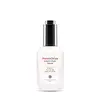What's inside
What's inside
 Key Ingredients
Key Ingredients

 Benefits
Benefits

 Concerns
Concerns

 Ingredients Side-by-side
Ingredients Side-by-side

Water
Skin ConditioningGlycerin
HumectantTheobroma Cacao Extract
Skin ConditioningGlyceryl Stearate
EmollientPrunus Amygdalus Dulcis Oil
Skin ConditioningPetrolatum
EmollientCetyl Alcohol
EmollientPropylene Glycol
HumectantTheobroma Cacao Seed Butter
EmollientElaeis Guineensis Oil
EmollientCocos Nucifera Oil
MaskingDimethicone
EmollientButyrospermum Parkii Butter
Skin ConditioningTocopherol
AntioxidantHelianthus Annuus Seed Oil
EmollientSoluble Collagen
HumectantHydrolyzed Elastin
EmollientArgania Spinosa Kernel Oil
EmollientCentella Asiatica Extract
CleansingBetula Alba Bark Extract
MaskingBoswellia Serrata Extract
Skin ConditioningPolygonum Cuspidatum Root Extract
AntioxidantSodium Ascorbate
AntioxidantAcetylarginyltryptophyl Diphenylglycine
Skin ConditioningSodium Benzoate
MaskingHydroxyacetophenone
Antioxidant1,2-Hexanediol
Skin ConditioningCaprylyl Glycol
EmollientXanthophylls
Skin ConditioningZea Mays Starch
AbsorbentGlucose
HumectantLeuconostoc/Radish Root Ferment Filtrate
AntimicrobialHydroxyethylcellulose
Emulsion StabilisingIsopropyl Alcohol
SolventPEG-8 Stearate
EmulsifyingEthyl Lauroyl Arginate Hcl
Skin ConditioningParfum
MaskingBehentrimonium Methosulfate
Butylene Glycol
HumectantCaramel
Cosmetic ColorantCellulose
AbsorbentSodium Acetate
BufferingStearyl Alcohol
EmollientMyristyl Alcohol
EmollientLauryl Alcohol
EmollientWater, Glycerin, Theobroma Cacao Extract, Glyceryl Stearate, Prunus Amygdalus Dulcis Oil, Petrolatum, Cetyl Alcohol, Propylene Glycol, Theobroma Cacao Seed Butter, Elaeis Guineensis Oil, Cocos Nucifera Oil, Dimethicone, Butyrospermum Parkii Butter, Tocopherol, Helianthus Annuus Seed Oil, Soluble Collagen, Hydrolyzed Elastin, Argania Spinosa Kernel Oil, Centella Asiatica Extract, Betula Alba Bark Extract, Boswellia Serrata Extract, Polygonum Cuspidatum Root Extract, Sodium Ascorbate, Acetylarginyltryptophyl Diphenylglycine, Sodium Benzoate, Hydroxyacetophenone, 1,2-Hexanediol, Caprylyl Glycol, Xanthophylls, Zea Mays Starch, Glucose, Leuconostoc/Radish Root Ferment Filtrate, Hydroxyethylcellulose, Isopropyl Alcohol, PEG-8 Stearate, Ethyl Lauroyl Arginate Hcl, Parfum, Behentrimonium Methosulfate, Butylene Glycol, Caramel, Cellulose, Sodium Acetate, Stearyl Alcohol, Myristyl Alcohol, Lauryl Alcohol
Water
Skin ConditioningButylene Glycol
HumectantBabassu Oil Glycereth-8 Esters
EmulsifyingNiacinamide
SmoothingGlycerin
HumectantPentaclethra Macroloba Seed Oil
EmollientOrbignya Oleifera Seed Oil
EmollientPropanediol
Solvent1,2-Hexanediol
Skin ConditioningPolyacrylate Crosspolymer-6
Emulsion StabilisingBisabolol
MaskingParfum
MaskingSodium Hyaluronate
HumectantAloe Barbadensis Leaf Extract
EmollientCaprylhydroxamic Acid
T-Butyl Alcohol
PerfumingArtemisia Princeps Leaf Extract
Skin ConditioningWater, Butylene Glycol, Babassu Oil Glycereth-8 Esters, Niacinamide, Glycerin, Pentaclethra Macroloba Seed Oil, Orbignya Oleifera Seed Oil, Propanediol, 1,2-Hexanediol, Polyacrylate Crosspolymer-6, Bisabolol, Parfum, Sodium Hyaluronate, Aloe Barbadensis Leaf Extract, Caprylhydroxamic Acid, T-Butyl Alcohol, Artemisia Princeps Leaf Extract
Ingredients Explained
These ingredients are found in both products.
Ingredients higher up in an ingredient list are typically present in a larger amount.
1,2-Hexanediol is a synthetic liquid and another multi-functional powerhouse.
It is a:
- Humectant, drawing moisture into the skin
- Emollient, helping to soften skin
- Solvent, dispersing and stabilizing formulas
- Preservative booster, enhancing the antimicrobial activity of other preservatives
Butylene Glycol (or BG) is used within cosmetic products for a few different reasons:
Overall, Butylene Glycol is a safe and well-rounded ingredient that works well with other ingredients.
Though this ingredient works well with most skin types, some people with sensitive skin may experience a reaction such as allergic rashes, closed comedones, or itchiness.
Learn more about Butylene GlycolGlycerin is already naturally found in your skin. It helps moisturize and protect your skin.
A study from 2016 found glycerin to be more effective as a humectant than AHAs and hyaluronic acid.
As a humectant, it helps the skin stay hydrated by pulling moisture to your skin. The low molecular weight of glycerin allows it to pull moisture into the deeper layers of your skin.
Hydrated skin improves your skin barrier; Your skin barrier helps protect against irritants and bacteria.
Glycerin has also been found to have antimicrobial and antiviral properties. Due to these properties, glycerin is often used in wound and burn treatments.
In cosmetics, glycerin is usually derived from plants such as soybean or palm. However, it can also be sourced from animals, such as tallow or animal fat.
This ingredient is organic, colorless, odorless, and non-toxic.
Glycerin is the name for this ingredient in American English. British English uses Glycerol/Glycerine.
Learn more about GlycerinParfum is a catch-all term for an ingredient or more that is used to give a scent to products.
Also called "fragrance", this ingredient can be a blend of hundreds of chemicals or plant oils. This means every product with "fragrance" or "parfum" in the ingredients list is a different mixture.
For instance, Habanolide is a proprietary trade name for a specific aroma chemical. When used as a fragrance ingredient in cosmetics, most aroma chemicals fall under the broad labeling category of “FRAGRANCE” or “PARFUM” according to EU and US regulations.
The term 'parfum' or 'fragrance' is not regulated in many countries. In many cases, it is up to the brand to define this term.
For instance, many brands choose to label themselves as "fragrance-free" because they are not using synthetic fragrances. However, their products may still contain ingredients such as essential oils that are considered a fragrance by INCI standards.
One example is Calendula flower extract. Calendula is an essential oil that still imparts a scent or 'fragrance'.
Depending on the blend, the ingredients in the mixture can cause allergies and sensitivities on the skin. Some ingredients that are known EU allergens include linalool and citronellol.
Parfum can also be used to mask or cover an unpleasant scent.
The bottom line is: not all fragrances/parfum/ingredients are created equally. If you are worried about fragrances, we recommend taking a closer look at an ingredient. And of course, we always recommend speaking with a professional.
Learn more about ParfumWater. It's the most common cosmetic ingredient of all. You'll usually see it at the top of ingredient lists, meaning that it makes up the largest part of the product.
So why is it so popular? Water most often acts as a solvent - this means that it helps dissolve other ingredients into the formulation.
You'll also recognize water as that liquid we all need to stay alive. If you see this, drink a glass of water. Stay hydrated!
Learn more about Water